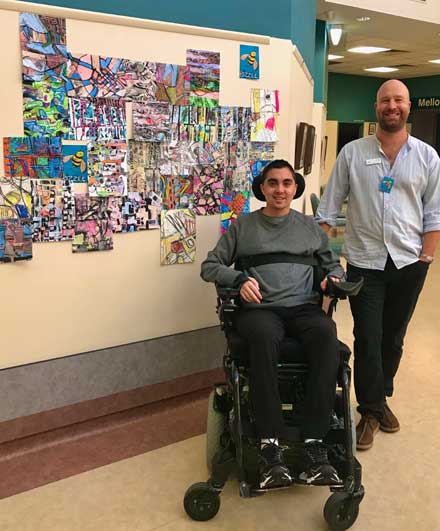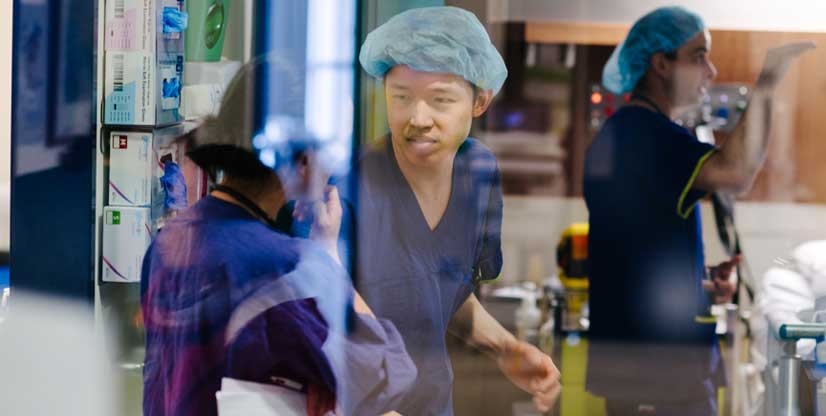About
The Bizzee Bees helping patients beat isolation
- Home
- About
- Latest news
- All news
- Archived news 2020
- The Bizzee Bees helping patients beat isolation

Wednesday 1 July 2020
Victoria went into its first lockdown just as Dan Cheong arrived at Royal Talbot Rehabilitation Centre for months of rehabilitation after a spinal cord injury.
Along with the rest of the state, Austin Health put tight restrictions on visitors and visiting hours, to prevent the spread of COVID-19.
Dan’s injury is between the C4 and C5 vertebrae, at the base of his neck. He has had to come to terms with a new reality, of having no feeling or movement from the chest down, and limited use of his hands.
“I did graphic design before my injury, but now… I don’t know what I’ll be doing in the future,” Dan says.
“It’s been tricky, with the limits to visiting hours. It’s good to have things to do, and to get you moving. You don’t want to spend too much time just by yourself in your room, thinking.”
Recognising the challenge isolation presented to their patients, Royal Talbot’s Community Integration and Leisure Services (CILS) team developed the ‘Bizzee Bees’ initiative.
Recreation specialist Sharon Bard says that the program has three components: the doodle art wall (pictured), developed by Dan Waters; the ‘Combat Isolation Leisure Resource Guide’, put together by Lottie Stein; and the ‘Explore Talbot’ tool, which Tim Marchington was instrumental in putting together.
Each activity allows for physical distancing, while supporting patients to meet their rehabilitation goals and ‘get bizzee’!
“The resource guide can be accessed remotely and encourages patients to use technology creatively, through things like Zoom dinner parties or online ‘pub’ trivia, and opportunities to access things for free that you normally have to pay to experience – interactive concerts by musicians, symphony performances, museum tours… We are trying to jump on all the new opportunities.”
The doodle wall is a collaborative piece of art by patients, who each produce a contribution in their own time. Explore Talbot invites patients to explore the gardens at Talbot and find its hidden treasures, with occasional stops for mindfulness activities.
“The art wall has just been huge. Everyone’s contributing, even staff and volunteers. One of the physios has been using the Explore Talbot tool in her therapy, to help people with acquired brain injuries to orientate and recognise things in their environment,” says Sharon.
Dan started participating in the doodle wall – and wider art program – by drawing and painting with his mouth. He now uses a special glove that allows him to hold a paintbrush or pencil. He’s noticed numerous benefits.
“There’s been the mental health aspect, and it’s also improved my upper body strength. Compared to physio and OT sessions, it doesn’t feel as much like you’re working out. I feel it afterwards but at the time, it’s enjoyable,” Dan says.






